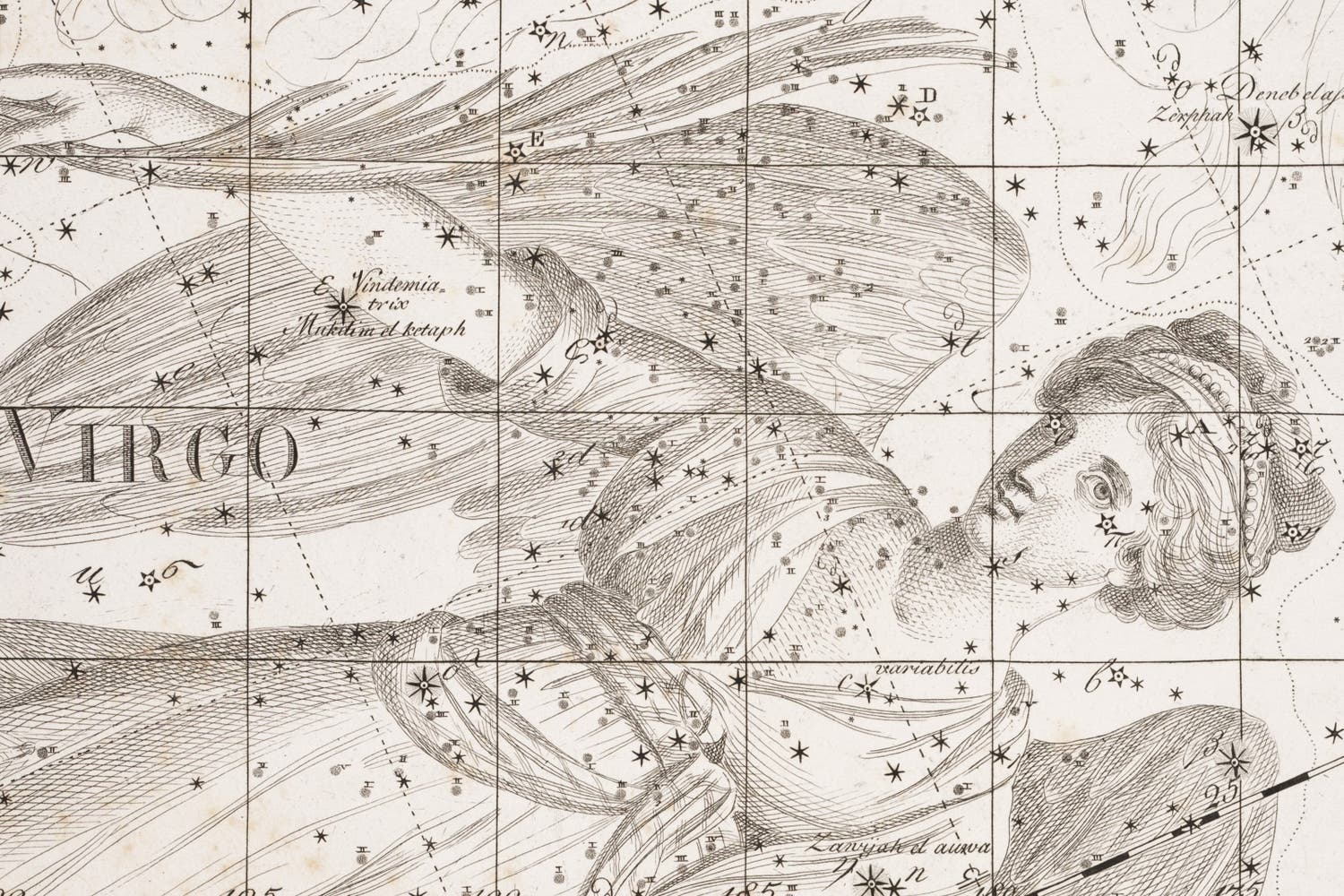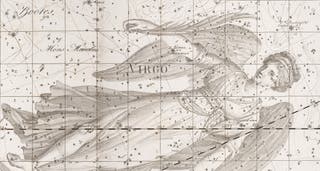Bode’s Uranographia and its Aftermath, 1801-1851
Bode, Johann. Uranographia. Berlin, 1801.
If the Golden Age of the Celestial Atlas began with Bayer's Uranometria, it ended almost exactly two centuries later, with Bode's Uranographia. In size, this is the largest star atlas that has ever been published. The positions of more than 17,000 stars are given, as well as just about every constellation ever invented, and no less than 2500 nebulae that had been discovered and catalogued by William Herschel. Even the style of the constellation figures is new, showing very little allegiance to Bayer, Hevelius, or Flamsteed.
The image above shows the constellation Virgo, which is particularly rich in nebulae, but the atlas is so large that much more detailed images can be obtained. It takes a few seconds to load, but it is fun to zoom in on Bode's Virgo.

Enhanced detail of Virgo.
Bode has the distinction of being the only astronomer to produce two totally different star atlases. Bode's edition of Flamsteed's atlas was modest in size, adhered to the Flamsteed constellation figures (as improved by the French), and modified the French editions only by adding additional stars. In his Uranographia, however, he offered a gargantuan alternative, truly the grandest star atlas ever produced. In its twenty oversize double-page plates (each one fully XX times bigger than the plates in his Flamsteed edition), we find new constellation figures for the old constellations, some entirely new constellations, new stars, and, most overwhelmingly, every one of the 2000 odd nebulae discovered by William Herschel in the preceding twenty years. Bode never discarded a constellation. Practically every one proposed since Hevelius is included here, as well as five brand new ones, of which the Montgolfier balloon, Globus aerostatitus (see below), is one of the most splendid.

